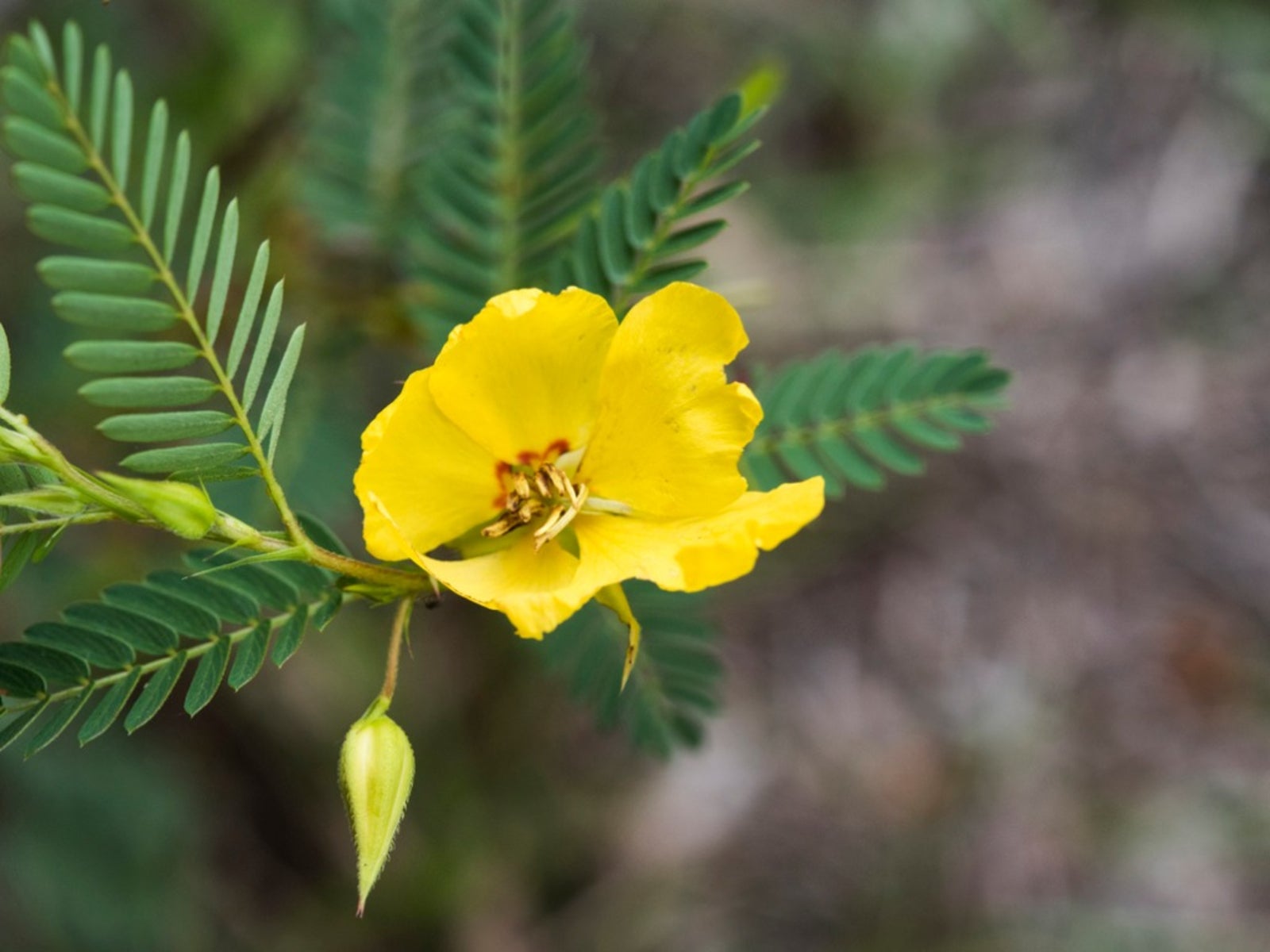Partridge Pea Care – Tips On Growing Partridge Pea In Gardens


Also known as sleeping plant, partridge pea (Chamaecrista fasciculata) is a North American native that grows on prairies, riverbanks, meadows, open woodlands, and sandy savannahs across much of the eastern half of the United States. A member of the legume family, partridge pea is a critical source of nutrition for quail, ring-necked pheasant, prairie chickens, and other grassland birds. Partridge peas in gardens provide attractive, bluish green foliage and bright yellow, nectar-rich blooms that attract bees, songbirds, and several species of butterflies. If this snippet of information has piqued your interest, read on to learn more about partridge pea plants.
Partridge Pea Information
Partridge pea plants reach mature heights of 12 to 26 inches (31-91 cm.). Clusters of bright yellow blooms adorn the plant from midsummer to early fall. This drought tolerant plant is a great groundcover and is often used for erosion control. Although partridge pea is an annual, it reseeds itself from year to year and can become somewhat aggressive. Partridge pea is also known as a sensitive plant due to the delicate, feathery leaves that fold up when you brush them with your fingers.
Growing Partridge Pea
Plant partridge pea seeds directly in the garden in fall. Otherwise, plant seeds indoors a few weeks before the last expected springtime frost. Growing partridge pea isn’t complicated, as the plant tolerates poor, average to dry soil, including gravel, sandy, clay, and loam. Like any legume, partridge pea improves soil quality by adding nitrogen compounds.
Partridge Pea Care
Once established, partridge pea plants require very little care. Simply water occasionally but beware of overwatering. Deadhead wilted flowers regularly to promote continued blooming. Removing spent blooms also keeps the plant in check and prevents rampant reseeding. You can also mow over the top of plants to control weeds and remove wilted blooms. No fertilizer is necessary.
Gardening tips, videos, info and more delivered right to your inbox!
Sign up for the Gardening Know How newsletter today and receive a free copy of our e-book "How to Grow Delicious Tomatoes".

A Credentialed Garden Writer, Mary H. Dyer was with Gardening Know How in the very beginning, publishing articles as early as 2007.
-
 Looking For Plants To Give You The Soft And Fuzzies? Try These 5 Fuzzy Leaf Plant Options
Looking For Plants To Give You The Soft And Fuzzies? Try These 5 Fuzzy Leaf Plant OptionsLovers of texture, drama, silver foliage and tactile plants will adore these special sensory garden additions. These fuzzy leaf plant options will leave you all aglow
By Susan Albert
-
 Get Ready For A Summer Of Hummers! Grow These Full Sun Hummingbird Plants and Flowers
Get Ready For A Summer Of Hummers! Grow These Full Sun Hummingbird Plants and FlowersIf you’re lucky enough to enjoy a sunny backyard, make sure you are maxing out on your pollinator opportunities and grow these full sun hummingbird plants and flowers
By Tonya Barnett